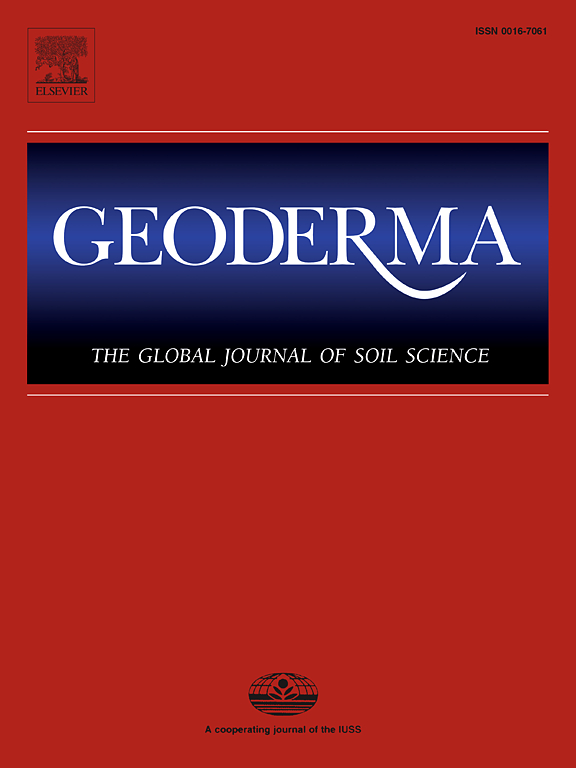Evidence of high carbon biodegradability in the subsoil of Mediterranean croplands
IF 5.6
1区 农林科学
Q1 SOIL SCIENCE
引用次数: 0
Abstract
Although soil carbon is a key element for soil health and climate change mitigation, our understanding of its dynamics is still incomplete. Deep soil horizons are thought to contain mostly organic carbon stabilised at centennial or even millennia time scales. The present study aimed to investigate the common paradigm of high stability of soil carbon in deep soil horizons in semiarid Mediterranean cultivated environments. It was based on a combined assessment and analysis of soil organic carbon (SOC) contents, stocks, biodegradability, and radiocarbon age of eleven soil profiles in north-eastern Tunisia, in the context of soils developed on marine sedimentary parent material with very low to moderate soil inorganic carbon (SIC) content. SOC content and stocks were found to be typical of cultivated Mediterranean soils, with low SOC content (<2%), decreasing with depth and a predominant stock of SOC in subsoils (>30 cm). Our results first revealed high levels of carbon biodegradability for all the soils investigated, confirming that soil carbon in the Mediterranean context can be rapidly decomposed under optimal temperature and moisture conditions. They also showed that the biodegradability of carbon increased with depth, even in profiles with very low SIC contents, indicating that the organic fraction of subsoil carbon is likely to be less stable than that of topsoil carbon. The significant increase in SOC biodegradability with depth was supported by applying a literature-based correction for the contribution of SIC-derived CO2 to soil respiration emissions. In addition, SOC biodegradability was strongly positively correlated with its radiocarbon age, implying that SOC stability decreases with increasing mean residence time. We explained these original results by a significant presence of very old and highly biodegradable organic carbon in the subsoil organic carbon pool, probably inherited from a Quaternary paleoenvironment and preserved since then due to the favourable preservation conditions associated with the semi-arid climate. Finally, this study highlights the great vulnerability of the millennia-old organic carbon pool stored in some deep horizons of Mediterranean soils, and the necessity to protect it from reconnection with the atmosphere. More broadly, it demonstrates the need to take greater account of the active role of old organic carbon in carbon cycle studies in these specific environments.
求助全文
约1分钟内获得全文
求助全文
来源期刊

Geoderma
农林科学-土壤科学
CiteScore
11.80
自引率
6.60%
发文量
597
审稿时长
58 days
期刊介绍:
Geoderma - the global journal of soil science - welcomes authors, readers and soil research from all parts of the world, encourages worldwide soil studies, and embraces all aspects of soil science and its associated pedagogy. The journal particularly welcomes interdisciplinary work focusing on dynamic soil processes and functions across space and time.
 求助内容:
求助内容: 应助结果提醒方式:
应助结果提醒方式:


